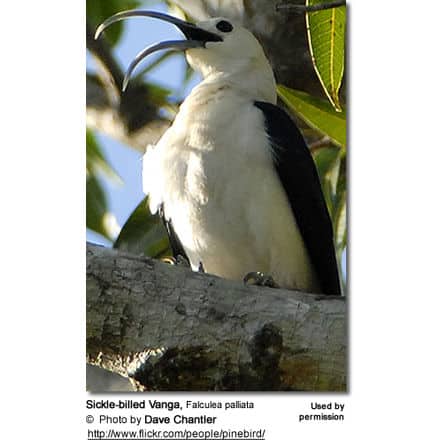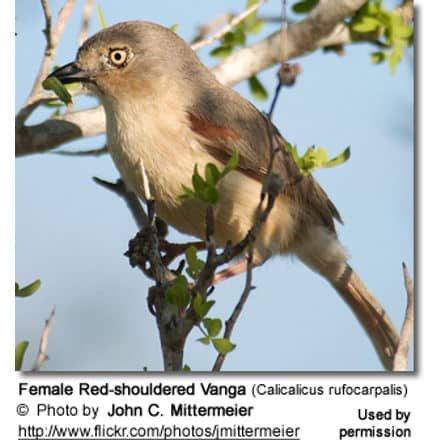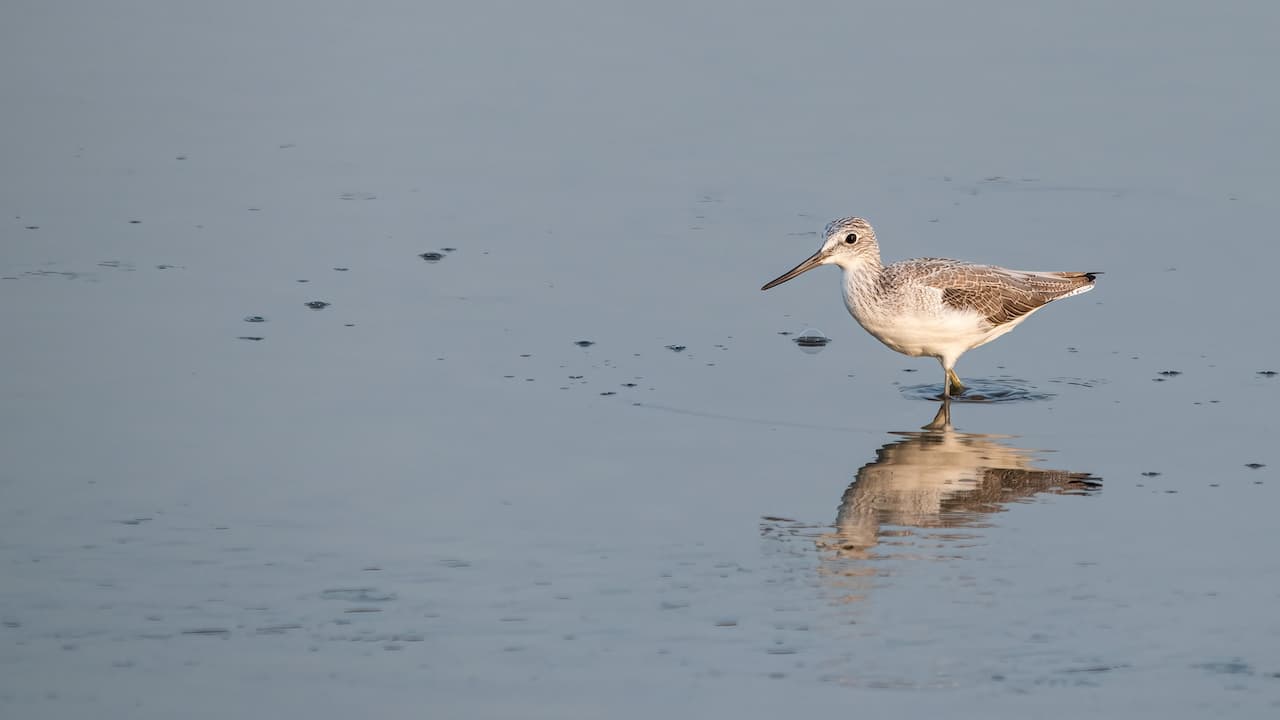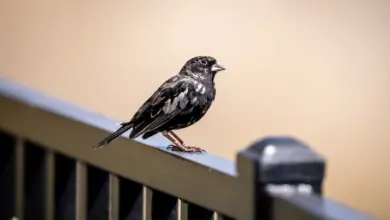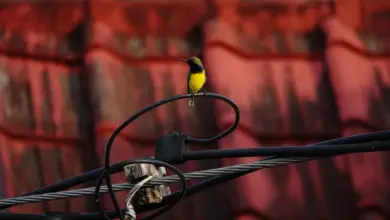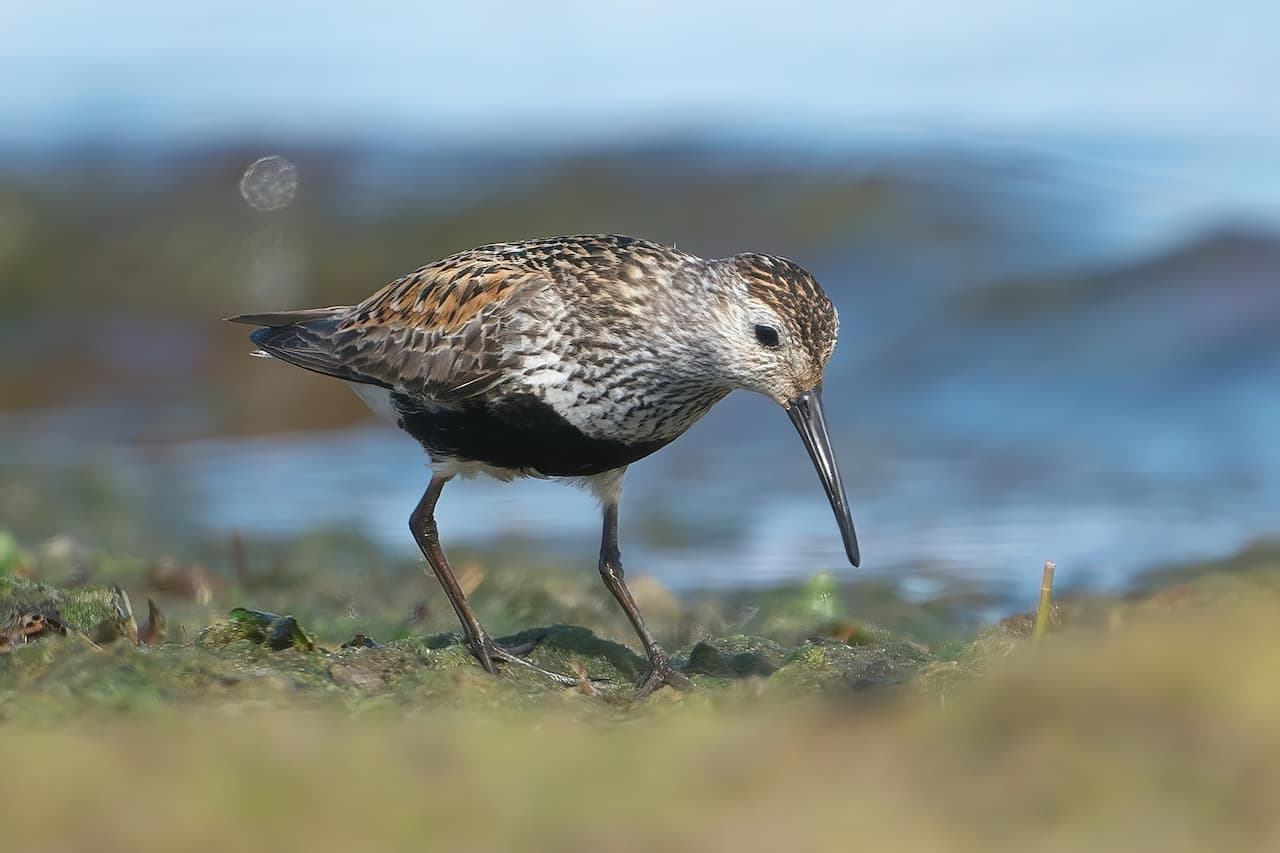Vangas
The vangas are small to medium-sized perching birds that are only found in Madagascar off the southeastern coast of Africa and Comoros – an island nation located off the eastern coast of Africa.
Description
Vangas are small to medium-sized birds, varying from 12 to 32 cm in length.
Bill Shape:
- Most have strong, hooked bills similar to those of shrikes.
- The Helmet Vanga has a particularly large bill with a casque on top.
- Some species, such as the newtonias, have a small, thin bill.
- The Sickle-billed Vanga has a long, curved bill.
Plumage:
- Most vangas are largely black, brown, or grey above and white below.
- The exceptions are the blue and white Blue Vanga and the blue-grey Nuthatch Vanga.
- The Helmet Vanga is mostly black with a rufous back.
- Male Bernier’s Vangas are entirely black while the females are brown.
Distribution and habitat
All vangas occur on the island of Madagascar, except for the Blue Vanga which is also found on the Comoros on Mohéli island and, at least formerly, on Grande Comore. They are resident (non-migratory) within their range.
Diet / Feeding
They feed on insects, earthworms, millipedes, lizards, and amphibians; except for the Blue Vanga and Chabert’s Vanga which may take fruits.
Most species forage in mixed-species flocks; except for the Hook-billed Vanga and Lafresnaye’s Vanga, which tend to feed alone.
Nesting / Feeding
Typically nest in in pairs; their cup-shaped nests are constructed out of twigs, bark, roots, and leaves. The Sickle-billed Vanga nests in groups and builds a large nest of sticks.
Calls / Vocalizations
Most vangas emit whistling calls.
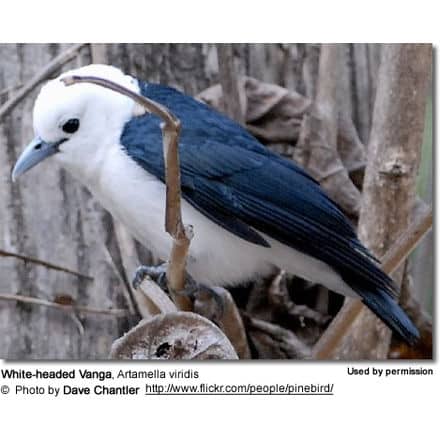
Recognized Sub-species
- Genus: Calicalicus
- Red-tailed Vanga, Calicalicus madagascariensis
- Red-shouldered Vanga, Calicalicus rufocarpalis – Regarded as Vulnerable.
- Rufous Vanga, Schetba rufa
- Hook-billed Vanga, Vanga curvirostris
- Lafresnaye’s Vanga, Xenopirostris xenopirostris
- Van Dam’s Vanga, Xenopirostris damii – Endangered as it is restricted to a small area of north-west Madagascar where the forest is rapidly disappearing due to clearance for agriculture and uncontrolled bushfires
- Pollen’s Vanga, Xenopirostris polleni – Classified as Near-threatened by BirdLife International
- Sickle-billed Vanga, Falculea palliata
- White-headed Vanga, Artamella viridis
- Chabert’s Vanga, Leptopterus chabert – Relatively common.
- Blue Vanga, Cyanolanius madagascarinus
- Comoro Blue Vanga, Cyanolanius (madagascarinus) comorensis.
- Bernier’s Vanga, Oriolia bernieri – Regarded as Vulnerable.
- Helmet Vanga, Euryceros prevostii – Regarded as Vulnerable.
- Tylas Vanga, Tylas eduardi
- Nuthatch Vanga or Coral-billed Nuthatch-vanga, Hypositta corallirostris
- Bluntschli’s Vanga or Short-toed Nuthatch-vanga, Hypositta perdita – Only described from two old specimens and its taxonomic status questionable.
- Dark Newtonia, Newtonia amphichroa
- Common Newtonia, Newtonia brunneicauda
- Archbold’s Newtonia, Newtonia archboldi
- Red-tailed Newtonia, Newtonia fanovanae – Regarded as Vulnerable.
- Crossley’s Babbler, Mystacornis crossleyi
- Ward’s Flycatcher, Pseudobias wardi

